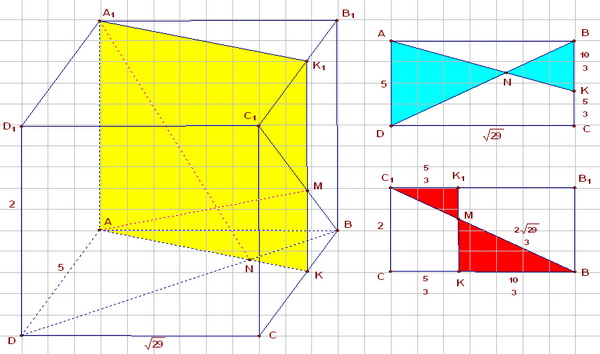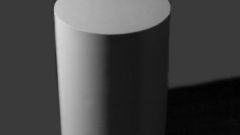Instruction
1
Using a box can hold four sections, which are squares or rectangles. He has two diagonal and two cross-sections. They usually have different sizes. The exception is the cube, which are the same.
Before you build section of the box, make a representation that represents this figure. There are two types of parallelepipeds - normal and rectangular. Conventional parallelepiped facets are at an angle to the base, they are rectangular and perpendicular to it. All faces of a rectangular parallelepiped are rectangles or squares. It follows from this that a cube is a special case of a rectangular parallelepiped.
Before you build section of the box, make a representation that represents this figure. There are two types of parallelepipeds - normal and rectangular. Conventional parallelepiped facets are at an angle to the base, they are rectangular and perpendicular to it. All faces of a rectangular parallelepiped are rectangles or squares. It follows from this that a cube is a special case of a rectangular parallelepiped.
2
Any section of a parallelepiped has certain characteristics. The main ones are area, perimeter, length of the diagonals. If the conditions of the problem known to the parties section, or any other parameters, this is enough to find its perimeter or area. The parties determined also diagonal sections. The first of these parameters - the area of the diagonal section.
To find the area of the diagonal section, you need to know the height and base side of the parallelepiped. If the length and width of the base of the box, then find the diagonal by using the Pythagorean theorem:
d=√a^2+b^2.
Finding the diagonal and knowing the height of a cuboid, calculate the cross-sectional area of a parallelepiped:
S=d*h.
To find the area of the diagonal section, you need to know the height and base side of the parallelepiped. If the length and width of the base of the box, then find the diagonal by using the Pythagorean theorem:
d=√a^2+b^2.
Finding the diagonal and knowing the height of a cuboid, calculate the cross-sectional area of a parallelepiped:
S=d*h.
3
The perimeter of a diagonal cross-section is also possible to calculate two values - the diagonal of the base and the height of the parallelepiped. In this case, first find the two diagonals (upper and lower grounds) by the Pythagorean theorem, and then fold over with double height.
4
If we draw a plane parallel to the edges of the parallelepiped, it is possible to obtain the cross-section is rectangle, the sides of which are one side of the base of the box and height. The area of this section find the following:
S=a*h.
The perimeter of this section find in the same way according to the following formula:
p=2*(a+h).
S=a*h.
The perimeter of this section find in the same way according to the following formula:
p=2*(a+h).
5
The latter case occurs when the section passes in parallel to the two bases of the parallelepiped. Then its area and perimeter equal to area value and the perimeter of the grounds, ie:
S=a*b - cross-sectional area;
p=2*(a+b).
S=a*b - cross-sectional area;
p=2*(a+b).

